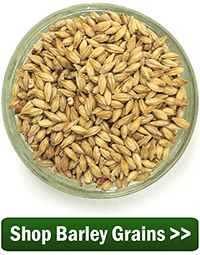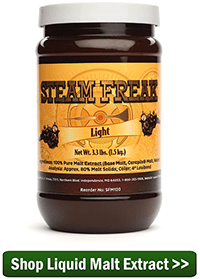 One of the biggest challenges of homebrewing is recipe formulation. There are so many different ingredients available to the homebrewer, that it takes a lifetime of brewing to develop a solid understanding of how each one impacts beer flavor, aroma, color, and mouthfeel. That’s why I often recommend that new brewers try clone recipes. You have a good idea of how your homebrew is going to turn out, and you get learn about different brewing ingredients along the way.
One of the biggest challenges of homebrewing is recipe formulation. There are so many different ingredients available to the homebrewer, that it takes a lifetime of brewing to develop a solid understanding of how each one impacts beer flavor, aroma, color, and mouthfeel. That’s why I often recommend that new brewers try clone recipes. You have a good idea of how your homebrew is going to turn out, and you get learn about different brewing ingredients along the way.
But sure enough, coming up with your own beer recipes is one of the reasons people enjoy homebrewing. It’s a sudsy expression of creativity – that just happens to get you buzzed!
One of the more challenging aspects of beer recipe formulation is figuring out how different malts affect a beer. This post will cover some tips and tricks for developing dark beer recipes.
Tips for Brewing Dark Beers
What makes a beer dark? Malt! In the third step of the malting process, a maltster heats the sprouted grain to dry it out and develop some flavor and color. This step is called kilning. Basically, the higher the heat and the longer the kiln, the darker color of the grain. Maltsters can used these variables to make malts that range from pale yellow in color to red, brown, or even black.
One thing to be aware of when brewing dark beer is, in general, it only takes a small amount of dark malt to affect beer color. But it’s not just about color – flavor is important too. It’s a balancing act between getting the flavor profile you want as well as the color.
When building a dark beer recipe, start by thinking about flavor. This clearly depends on the beer style, but also on your personal preference. Do you want a bready, almost chewy, sweet malt flavor? In this case the beer recipe might include decent amounts of lightly roasted Munich malts with just a touch of chocolate or Carafa to get the rest of the color. Or would you prefer a dry, bitter, roasty beer? In this case the beer recipe may include mostly regular pale malt with larger amounts of chocolate malt and roasted barley. Caramel malts can contribute complexity to beers, offering flavors of caramel, raisins, nuts, or dates. Think about the balance you want to achieve for your dark beer, then select the malts accordingly. Finally, small adjustments can be made to get the color where you want it.
What about using extract when brewing dark beers?
Dark malt extract works great for beginning homebrewers. It’s an easy way to brew a dark beer without having to figure out the right combination of malts to get the color you want. But a lot of homebrewers will agree that dark malt extract doesn’t give you a lot of flexibility when brewing dark beers. The dark malt extract was made with a specific blend of grains. You’re kind of stuck with the flavor profile you get.
An alternative way to do it is to use light malt extract and then use the darker specialty grains to get the color and flavor just the way you like it. You can certainly brew a stout using light malt extract! Just use 5-15% of the darker specialty grains to get the color and flavor you want. Explore some tried and true beer recipes to get a sense of what malts work well together and in what amounts.
With a little practice, you’ll soon get a feel for different specialty grains and how to go about brewing a delicious dark beer.
What’s your favorite dark beer style?
—–
David Ackley is a writer, brewer, and craft beer marketing consultant. He holds a General Certificate in Brewing from the Institute of Brewing and Distilling and is founder of the Local Beer Blog.
